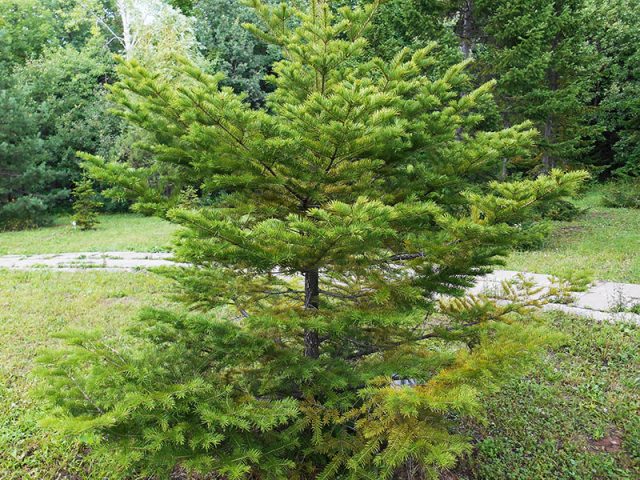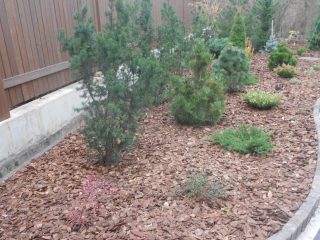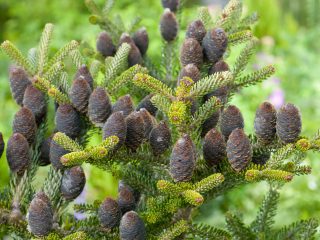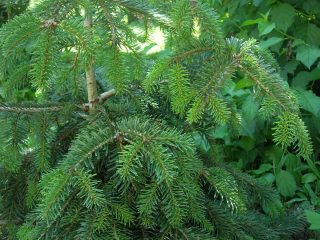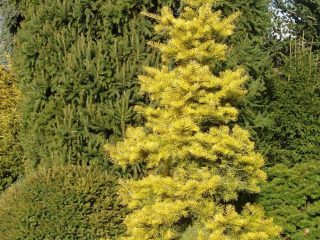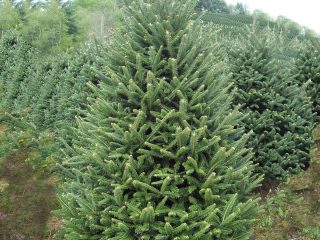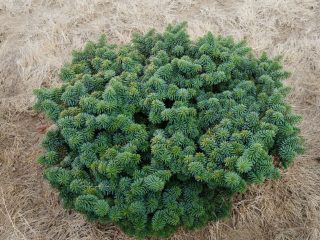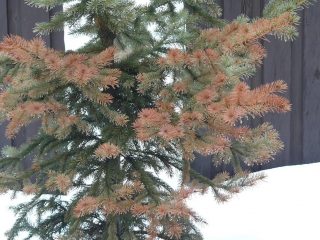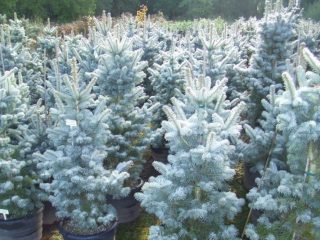Content
Whole-leaved fir - belongs to the genus Fir. It has several synonymous names - Black Manchurian Fir or Black Fir for short. The ancestors of the tree brought to Russia are firs: strong, equal-scaled, Kawakami. These varieties are common in India, China, Japan and Taiwan.
Description of whole-leaved fir
Black fir is an evergreen large tree reaching a height of 45–55 m. The girth of the trees (diameter) ranges from 1 to 2 m. It is one of the largest conifers in the Far East.
The crown of the whole-leaved fir (pictured) is dense and very wide. The shape is cone-shaped, the lower branches can reach down to the ground.
In young seedlings, the bark is flaky and colored grayish-brown. Old trees have dark, thick, rough bark, streaked with deep longitudinal and transverse cracks. The bark of annual shoots has an interesting ocher color, sometimes the shade varies from yellowish to gray-yellow.
The red-brown buds are egg-shaped. The length of the buds ranges from 7 to 10 mm, the width does not exceed 5 mm.
The trees are covered with light green needles, the length of which is 20–45 mm, width from 2 to 3 mm.The needles are hard, unbranched at the ends, hence the corresponding name - whole-leaved.
Microstrobiles (anther spikelets) have an oval shape, the length does not exceed 8 mm, the width is 2 times less - up to 4 mm.
The shape of the cones is cylindrical, length – 70–120 mm, diameter up to 40 mm. Light brown cones are located vertically (upwards) on the shoots. The cones contain wedge-oval-shaped seeds with an elongated wing (up to 12 mm). The color of the seeds is brownish-ocher, dimensions 8x5 mm.
According to various sources, the lifespan of black fir ranges from 250 to 450 years.
The tree is winter-hardy, shade-tolerant and wind-resistant. Can grow in well-lit areas. The crop is demanding on soil quality and does not tolerate polluted city air.
Whole-leaved fir in landscape design
Since 1905, black fir has been used for landscaping and is actively used in park construction. It is grown as an ornamental tree on private estates.
It is necessary to take into account that the tree is tall, so it can create inconvenience when growing in a small garden plot.
For the first 10 years, the seedling grows very slowly, then growth accelerates. Trees that have lost their decorative appeal are removed from the site and replaced with new seedlings.
Planting and caring for black fir
In order for the seedling to take root and delight you with green needles, you must follow the rules of planting and caring for black fir.
Within the city limits with heavily polluted air, seedlings rarely take root, so it is better to plant the tree in suburban areas and dachas.
Preparing seedlings and planting area
Whole-leaved fir is demanding on growing conditions, especially soil and air humidity.The seedling grows well in well-drained fertile soils. The acidity level should be between 6-7.5 pH, i.e. the soil should be neutral or slightly alkaline. It is best if the area allocated for planting has loamy soil.
For planting, choose a flat area in the north or northwest of the territory. When choosing a black fir seedling, you need to pay attention to the following:
- It is best to purchase a tree for planting from trusted suppliers, as the likelihood that the seedling will be accepted is much higher than for specimens purchased on the market;
- the age of the conifer is at least 5 years, since younger specimens do not tolerate changes in growing conditions and often die;
- It is better to buy seedlings with a closed root system. They tolerate replanting more easily and are quickly accepted in the ground.
Black fir is a tall tree, so it is better to plant it away from house construction, any buildings and paths, so that it does not interfere with movement and does not lead to cracking of walls.
Landing rules
The distance between adjacent holes should be at least 4–5 m. If the seedling was purchased in a container (with a closed root system), it is enough to dig a hole 5–7 cm larger than the size of the pot. Bare-rooted seedlings will require a larger hole. To determine the size of the planting hole, estimate the volume of the earthen ball on the roots and dig a hole 2 times larger so that the roots can freely fit in it. The standard pit size (excluding drainage layer) is 60–80 cm deep and up to 60 cm wide.
It is necessary to fill the bottom of the hole with drainage (20–30 cm). Broken bricks, small stones, gravel mixed with sand are suitable for these purposes.
Planting is best done in spring (April) or closer to autumn (late August - September).
Before planting, prepare a nutrient mixture consisting of humus, leaf soil, sand and complex mineral fertilizer. If the soil is heavy, add about 1 bucket of sawdust.
When planting, make sure that the root collar protrudes slightly above the ground. A small moat is left around the hole, which is necessary to retain moisture during watering.
Mulch the tree trunk circle with peat and sawdust. A layer of mulch (about 8 cm) protects the earthen clod from drying out and prevents the appearance of weeds. Mulching materials protect the roots of young fir trees from freezing.
If conifers are planted to arrange an alley, the distance between the holes is left from 4 to 5 m; if black fir is used in group plantings, it is enough to leave at least 3 m. Dense planting requires a distance between neighboring fir trees of 2.5 m.
Watering and fertilizing
The tree needs watering during transplantation; then the seedling is moistened only in severe drought. Usually, black fir has enough rainfall to grow and develop well. Excessive soil moisture has a negative effect on conifers.
Complex mineral fertilizers are used as fertilizers that enhance the growth of black fir. For example, “Kemira universal” is considered a good product, which consumes no more than 150 g per 1 m² of tree trunk circle.
Trimming
Black fir is a slow-growing coniferous tree that does not require formative pruning. For proper formation and creation of a beautiful appearance, old, dried out branches and damaged shoots are pruned.
Preparing for winter
Mature black fir does not need any preparation for winter or shelter; it tolerates frost well. It is advisable to cover the seedlings with spruce branches for the winter, and mulch the ground in the tree trunk with a layer of sawdust, peat or straw.
Reproduction
Whole-leaved black fir is bred in various ways:
- seeds;
- cuttings;
- layering.
Planting seeds and growing a coniferous tree from them is a very labor-intensive and time-consuming process, so the best option is to purchase a five-year-old seedling from a nursery.
The lower shoots often bend to the ground and take root on their own, without human intervention. Such layerings can be used for breeding.
Diseases and pests
Black fir has good immunity and rarely gets sick. A coniferous tree can suffer from fungal pathologies, for example, brown schutte leads to browning of the needles. Fir rust appears as yellow spots on top of the needles, and orange bubbles are visible below.
To help the tree get rid of fungus, copper-containing preparations are used. It can be “Hom”, “Horus”, Bordeaux mixture. To prevent fungal infections, spraying is carried out in spring and autumn. Fallen needles must be removed from the site and burned, damaged branches are cut off and disposed of. The soil in the tree trunk circle is also sprayed.
Fungal diseases can affect the root system; to prevent this from happening, it is necessary to monitor the condition of the soil and avoid excessive moisture. Watering the soil with Fitosporin helps protect against fusarium and root rot.
Economic importance and application
Black fir wood is uniform and durable, but it is not widely used in construction due to the fact that trees of this species are rare and are on the verge of extinction.
Young plantings suffer from poachers who cut down conifers before the New Year holidays. Firs look very similar to spruce, so they are in great demand on New Year's Eve.
The bark contains essential oil, which is used in folk recipes and traditional medicine. This oil is one of the components of skin and hair care cosmetics.
Black fir needles have a high content of ascorbic acid, which is why it is used in non-traditional methods of treating influenza and colds.
Due to the decorative nature of the crown, conifers are often used in landscape design. Black fir is used to create beautiful alleys in parks.
Conclusion
All-leaf black fir is a long-growing coniferous tree that is used for decorative purposes. Seedlings need special care and shelter for the winter; adult specimens are unpretentious. With proper planting and care, the conifer will delight the eye for many years.
